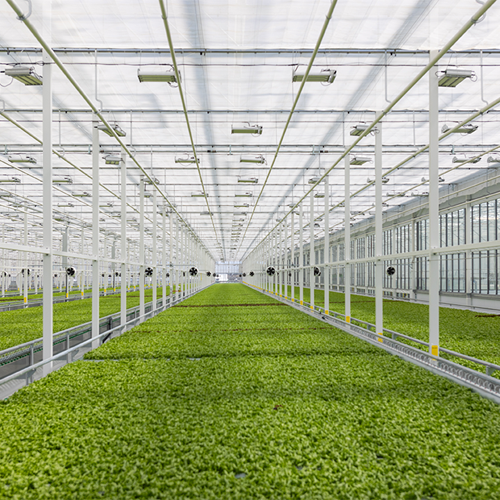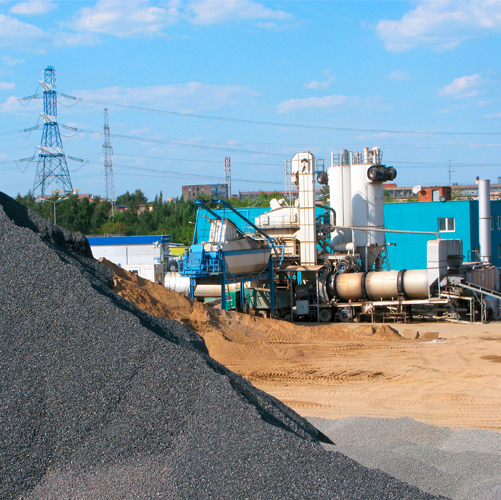Energy accounts for a very large share of the production costs in the greenhouse market. In the past, some growers benefited from Hydro-Québec’s dual energy rate, but since the repeal of this rate, these customers are looking for alternatives. Natural gas continues to be one of the best options, since some of these growers are already served by Gaz Métro.
To minimize the increase in energy costs, several energy efficiency solutions are available to these customers. Some of these solutions concern the greenhouse envelope, such as thermal screens, but others concern heat production and distribution of this energy inside the greenhouse. Some greenhouses are equipped with hot water boilers, to which energy efficiency measures directly apply.
In autumn 2005, Hydroserre Mirabel, a major greenhouse lettuce grower, decided to upgrade its natural gas boilers by installing micro-modulating burners. Micro-modulation improves the combustion efficiency of natural gas boilers by maintaining the best air-to-gas ratio to assure optimum combustion over this equipment’s entire operating range.


All of the greenhouses contain three sectors heated by two boiler rooms. The first boiler room contains three boilers and serves the phase I. A Cleaver Brooks 500 BHP natural gas boiler, a Volcano 300 BHP natural gas boiler and a Caloritech 450 BHP electric boiler comprise its equipment. The 500 BHP boiler is used on a priority basis, while the 300 BHP is only used as needed. The 450 BHP was in operation before the repeal of the dual energy rate.
The second boiler room supplies phases II and III and is located in phase II. A Cleaver Brooks 600 BHP oil/gas boiler, a Smith Boiler 450 BHP oil/gas boiler, a FP FSO 300 BHP oil/gas boiler and a Volcano Electric 300 BHP boiler are installed in this boiler room. The 600 BHP boiler primarily serves to heat the two sectors, while the 450 and 300 BHP oil/gas boilers serve as backup. The electric boiler is not in operation.
After the dual energy rate was repealed, it was important for the customer to mitigate the increase in its energy costs for heating of its 750,000 ft2 of greenhouse space. Since it could not change its greenhouse heating method without hindering the lettuce’s growth, it was a wise idea to optimize operation of the boilers. At full capacity, the boilers performed well, but below this threshold their performance declined. The customer then used to put a smaller boiler into operation, but maintenance costs became increasingly high. Since the condition of the main boilers was good, it was suggested that the customer install two burners with micro-modulating controls on the most frequently used boilers to benefit from substantial savings.
At the same time, to offer more flexible use and thus help the customer improve control of the heating temperature of each tertiary zone, a more precise control system was installed on the heating loops. A computerized production management system was already present, but the heating temperature control did not offer the required flexibility.
Another energy efficiency measure implemented by the customer was to change the CO2 production required to grow its lettuce. Previously, CO2 was produced by injecting liquid CO2 into the air and by using propane gas-powered CO2 generators. Conversion of the existing units and the addition of new units running on natural gas reduced the CO2 production cost, while using the heat generated by the combustion products to improve heating of precise zones. The customer also benefited from savings due to the greater efficiency of this type of equipment compared to the existing hot water heating system.
For all of these measures, we calculated a 9.6% decrease in natural gas consumption, which resulting in over 215,000 m3 in savings. The savings are significant during the off-season in October, November, March and April. The average savings during this period amount to over 33%, compared to 6% in the winter months.
In a North American competitive context, it is wise for market gardeners to seek efficient solutions for their greenhouse heating. Other growers favour the use of precise controls, or improvement of the greenhouse envelope. Nonetheless, energy efficiency continues to be at the core of this clientele’s concerns.
Marc Francoeur, Eng.
Technical Adviser
DATECH Group
Continue reading








